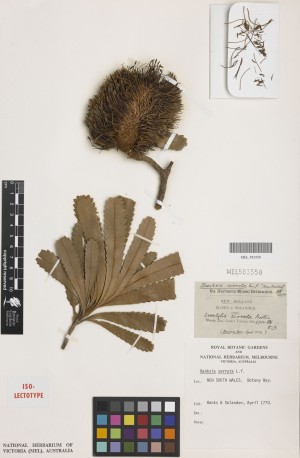PRESS RELEASE, 12/08/2014
An Australian online resource, which is proving invaluable for scientific research and conservation efforts here and overseas, reached a significant milestone this week.
Australia’s Virtual Herbarium (AVH, http://avh.chah.org.au/) – one of the world’s largest repositories of specimen-based botanical information – now contains over 5 million records.
“This milestone represents a mammoth collaborative effort from Australian herbaria, who have worked together for over 25 years to make the information associated with herbarium specimens easy to share and reuse by anyone, anywhere in the world”, said Kevin Thiele, Chair of the Council of Heads of Australasian Herbaria.
AVH brings together specimen data from many of Australia’s herbaria – specialised museums that house collections of dried plants, algae and fungi – and makes it freely available on the web, providing the most complete and up-to-date picture of Australia’s botanical diversity available. Combining these data sets and providing easy access to them expedites research and allows scientists to undertake large-scale research projects previously not possible.
AVH is delivered through the extensive infrastructure provided by the Atlas of Living Australia (ALA, http://ala.org.au/). Through the ALA, AVH data is linked to a large and growing number of environmental data sets, facilitating research that leads to a deeper understanding of Australia’s biodiversity.
AVH makes Australia uniquely placed to be a testing ground for new research methods. Recent research by Brent Mishler, a biology professor at the University of California, Berkeley, and colleagues at the Centre for Australian National Biodiversity Research in Canberra, used AVH data to develop and test methods for identifying areas of high genetic diversity, which may be in need of greater conservation protection.
“Australia presents the best current opportunity for studying large-scale patterns of diversity because of the nearly complete digitisation of herbarium collections by Australia’s Virtual Herbarium. These new landscape-scale methods are not feasible in the US until we have more herbarium data available”, said Mishler.
Using Australian acacias as an example, their research identified biologically important, but currently unprotected, areas in Western Australia and confirmed the significance of the world heritage listed Wet Tropics of Far North Queensland. “We now have a richer view of biodiversity that takes into account the number of species, their rarity in the landscape and the rarity of their close relatives”, Mishler said.
AVH data has also been applied to conservation efforts in other parts of the world. Researchers in South Africa have used herbarium specimen data to model the distribution of potentially weedy Australian species – including eucalypts, casuarinas and acacias – outside Australia and predict the likelihood that they will become invasive. “AVH data has been absolutely crucial for much of this work”, said David Richardson, Director of the Centre for Invasion Biology at Stellenbosch University.
The combined collections of Australian herbaria are estimated to exceed 7 million specimens and are expanding all the time. “Our herbaria are active research collections that are always growing. They contain specimens from the earliest European explorations of Australia to the most recent botanical expeditions. New specimens are added daily as botanists continue to investigate our native and naturalised flora”, said Thiele. This ongoing collecting and databasing makes AVH the most up-to-date reference data set for Australian botanical diversity.
The ALA is a partnership of Australian herbaria, museums, CSIRO, government agencies and other biological collections. The ALA is supported by the Australian Government through the National Collaborative Research Infrastructure Strategy (NCRIS) and the Education Investment Fund (EIF) Super Science initiative.
Further information Kevin Thiele
Chair, Council of Heads of Australasian Herbaria
kevin(dot)thiele(at)dec(dot)wa(dot)gov(dot)au
Fiona Brown
Communications Advisor, Atlas of Living Australia
fiona(dot)brown(at)csiro(dot)au




